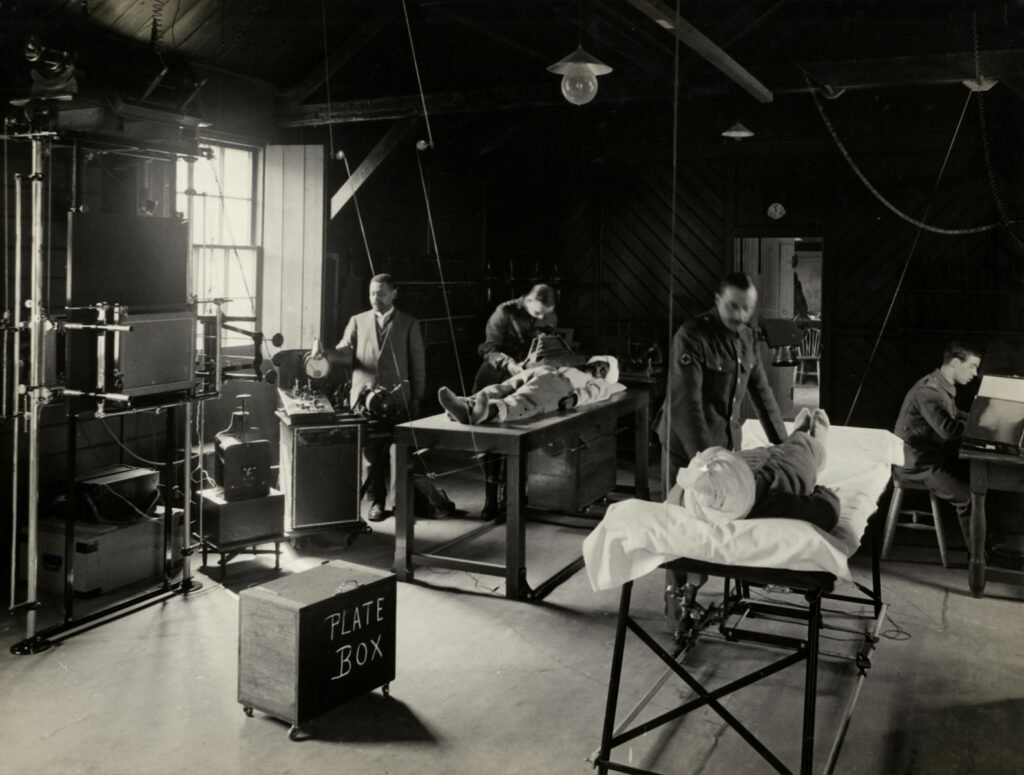
Key Developments in Farming Techniques
In the realm of farming during the 18th and 19th centuries, a bewildering era of ingenuity and toil on the untamed American frontier. Farming was not merely a vocation, but rather a way of existence. Farmers navigated through perplexing challenges with quick thinking and constant adaptation to the harsh terrain. A pivotal advancement that disrupted traditional farming methods during this epoch was the creation of the steel plow by the renowned John Deere. The adage “Nothing runs like a Deere” echd through fields as farmers could now till the rugged soil of the Midwest with unprecedented ease and efficiency.
Furthermore, an eruption in farming techniques arose with the implementation of crop rotation. In alignment with George Washington’s sage words, “To pursue schemes of agriculture is to make the country flourish,” farmers saw their lands thrive through strategic rotations involving crops such as corn, wheat, and soybeans. This practice rejuvenated soil nutrients while staving off depletion, resulting in amplified harvests that sustained both present needs and future generations alike. These innovative methodologies enabled farmers to nourish a burgeoning nation and set forth toward establishing America as an agricultural juggernaut. The perseverance and resourcefulness exhibited by these pioneering American farmers established enduring agricultural customs that continue to benefit society today.n
New Machinery Revolutionizing Agriculture
The 18th century farmlands were enveloped in a sense of bewilderment and excitement as they witnessed the emergence of new machinery that promised to revolutionize agriculture. The clanking of metal and the whirring of gears filled the air, signaling a shift towards more efficient and productive farming practices.
Farmers gazed upon these groundbreaking technologies with wide-eyed wonder, pondering the words of Benjamin Franklin: “Tell me and I forget, teach me and I may remember, involve me and I learn.” These machines were not mere tools; they embodied progress and creativity. A single individual could now effortlessly operate a mechanical plow that once required the laborious efforts of several men. The sheer simplicity yet effectiveness of these inventions left many speechless, echoing Thomas Jefferson’s sentiment that “Inventions then cannot be a subject of property.”
It seemed as though the very land itself was whispering tales of metamorphosis and advancement, urging farmers to embrace this new era with open arms.
Impact of Crop Rotation on Farming
Crop rotation, a practice shrouded in mystery and awe, has revolutionized the agricultural landscape. In a time when farming was more of an enigmatic art than a precise science, farmers stumbled upon the wondrous advantages of alternating their crops with each passing season. As the iconic George Washington once mused, “I know of no other pursuit that holds the key to rendering such vital and crucial services to a nation as enhancing its agriculture.” And indeed, crop rotation did just that.
Picture yourself as a bewildered farmer in the 18th century, gazing upon your barren soil exhausted from years of cultivating the same crop. Suddenly, like a burst of energy from nature itself, crop rotation emerges to breathe new life into your land and boost your harvests. As Thomas Jefferson sagely remarked, “Those who till the earth are truly priceless citizens. They possess unrivaled vigor and independence; they embody virtue and are bound to their country with unbreakable ties of loyalty.” With crop rotation at their disposal, farmers transcended mere land cultivators to become guardians dedicated to ensuring its sustainability and prosperity for generations to come.
Advancements in Animal Husbandry
Animal husbandry in the 18th century was like navigating through a labyrinth of uncertainty and surprise, I must say! It was a whirlwind of experimentation, drawing lessons from mishaps, and uncovering groundbreaking methods to nurture livestock that would leave your fellow farmers scratching their heads in astonishment. As the esteemed American statesman Thomas Jefferson once mused, “Farming appears deceptively simple when all you wield is a pencil for plowing and you’re light-years away from the cornfield.” And golly, did he hit the nail on the head!
Livestock served as the beating heart of numerous early American settlements, not only providing sustenance but also playing a pivotal role in driving the economy forward. Farmers had to rely on their sharp wit and boundless creativity to elevate their animal husbandry techniques. Take for example John Chapman, known far and wide as Johnny Appleseed; he made waves by introducing cutting-edge strategies in grafting apple trees, completely transforming orchard management. In his own words, “Planting a tree means planting a dream.” True to his word, his unwavering commitment to sustainable farming practices laid down the groundwork for future generations. These revolutionary strides in animal husbandry weren’t just about rearing livestock; they were about molding the trajectory of American agriculture and laying down the cornerstone for contemporary farming methodologies.
The Rise of Agricultural Societies
In the unfolding of the 18th century, a perplexing shift was occurring across the vast American landscape – the emergence of agricultural societies. Imagine this: fields expanding endlessly into the horizon, producing abundance under the skilled hands of devoted farmers. It was an era where communities united to work the land, creating a sense of unity and purpose that laid the groundwork for a flourishing nation.
In the words of Thomas Jefferson, a forward-thinking leader of his time, “Those who cultivate the earth are among society’s most valuable members. They are robust, self-reliant, and virtuous; their loyalty to their country and commitment to its freedom and well-being are unwavering.” Jefferson’s sentiment captures the essence of agricultural societies – faith in the land not only as a source of sustenance but also as a way of life. With each furrow plowed and each harvest gathered, these early settlers were not just cultivating food; they were planting seeds for a prosperous future for generations to come.
Innovations in Seed Technology
Picture a period when seeds were not merely seeds, but enigmas of nature waiting to be unraveled. The 18th century was an era of profound inquisitiveness and ingenuity, particularly in the realm of seed technology. Farmers were keen to delve into uncharted territory with new plant breeds and enhance crop yields, pushing the limits of what was deemed achievable in agriculture.
Thomas Jefferson, a polymath beyond his role as a Founding Father, once remarked, ‘The greatest service which can be rendered any country is to add a useful plant to its culture.’ This notion resonated strongly in the 18th century as farmers delved into unexplored seed varieties and cultivation techniques. The epoch witnessed the emergence of hybridization methods, where diverse plant strains were interbred to produce sturdier, more resilient crops. Seeds transcended their mundane existence they became emblems of inventiveness and advancement in agricultural methodologies.”
The Role of Scientific Discoveries in Agriculture
Imagine a time when the 18th century was on the cusp of a scientific revolution in agriculture that would forever alter the course of history. As a passionate devotee of US history, I am struck by the profound impact that scientific breakthroughs had on transforming our approach to farming.
In the wise words of Benjamin Franklin, “An investment in knowledge pays the best interest.” This wisdom rings true in the realm of agriculture as well. Consider George Washington Carver, an innovative scientist whose research on soil conservation and crop rotation techniques reshaped farming practices. His bold experiments not only boosted crop yields but also nurtured soil vitality, laying down a strong foundation for sustainable agriculture methods still in use today. The fusion of science and agriculture during this period sparked a wave of prosperity for farmers everywhere, guiding us towards a brighter and more sustainable future.
Challenges Faced by Farmers in the 18th and 19th Centuries
Oh, the myriad challenges that plagued farmers in the 18th and 19th centuries, as vast as the fields they tirelessly worked. From sunup to sundown, these industrious souls labored under the scorching sun, encountering hurdles at every twist and turn. The absence of modern technology only served to heighten the arduousness of their tasks. As Thomas Jefferson astutely observed, “Farming appears deceptively simple when your plow is but a pencil and you are miles away from the cornfield.” Truly, relying on manual labor and basic tools made farming an excruciatingly strenuous pursuit.
Picture the exasperation of contending with erratic weather patterns capable of decimating crops in a mere moment. As the adage gs, “The farmer must possess optimism or else he would not endure as a farmer.” Apart from grappling with nature’s whims, farmers confronted financial struggles, isolation, and an unceasing battle to provide for their loved ones. The agricultural realm was ever-evolving, demanding adaptability for survival. In line with Frederick Douglass’ sagacious observation: “No progress can be achieved without adversity.” Farmers during this era embodied tenacity and persistence in confronting hardship while shaping the land and establishing a legacy for future generations.n


